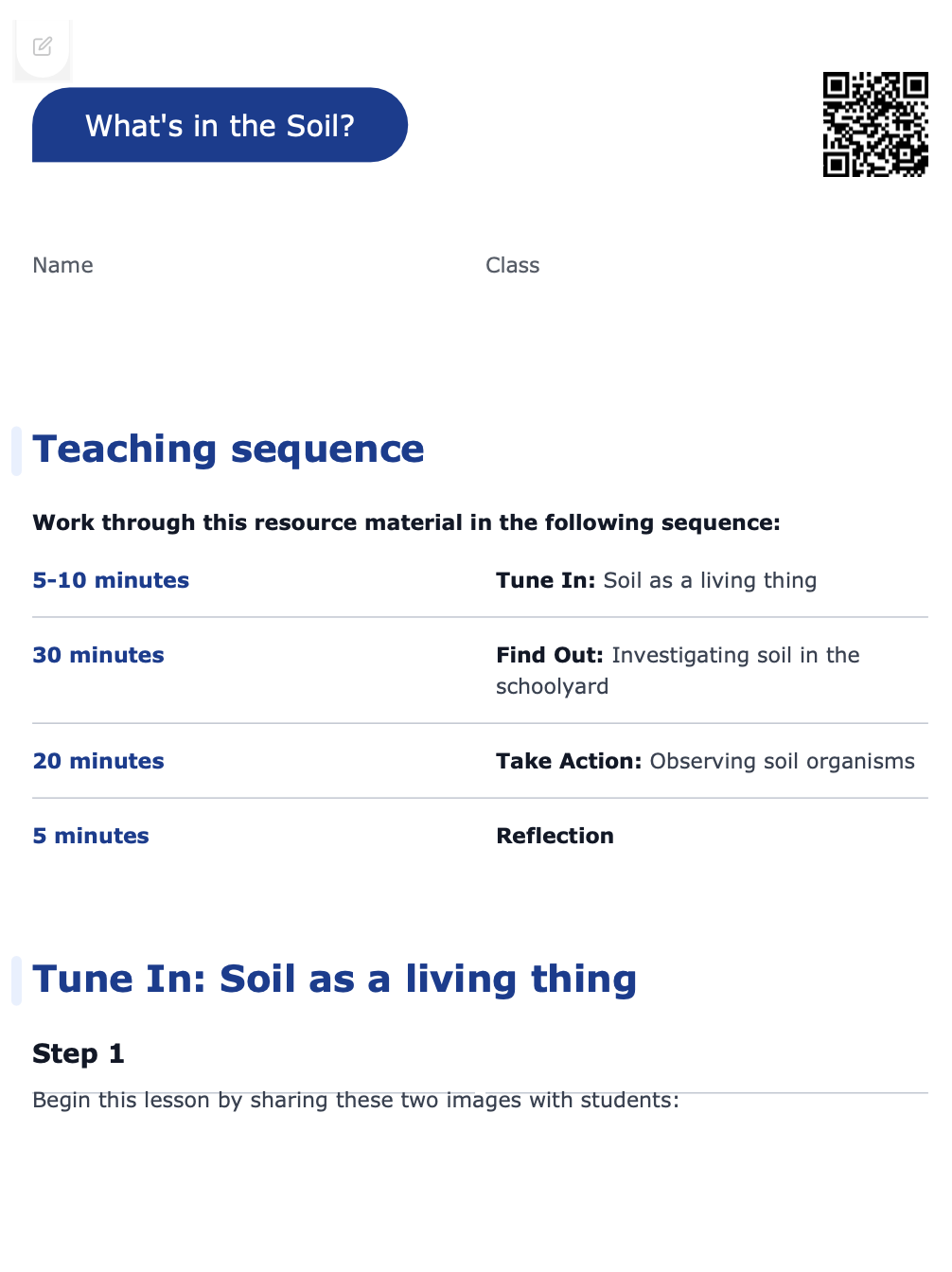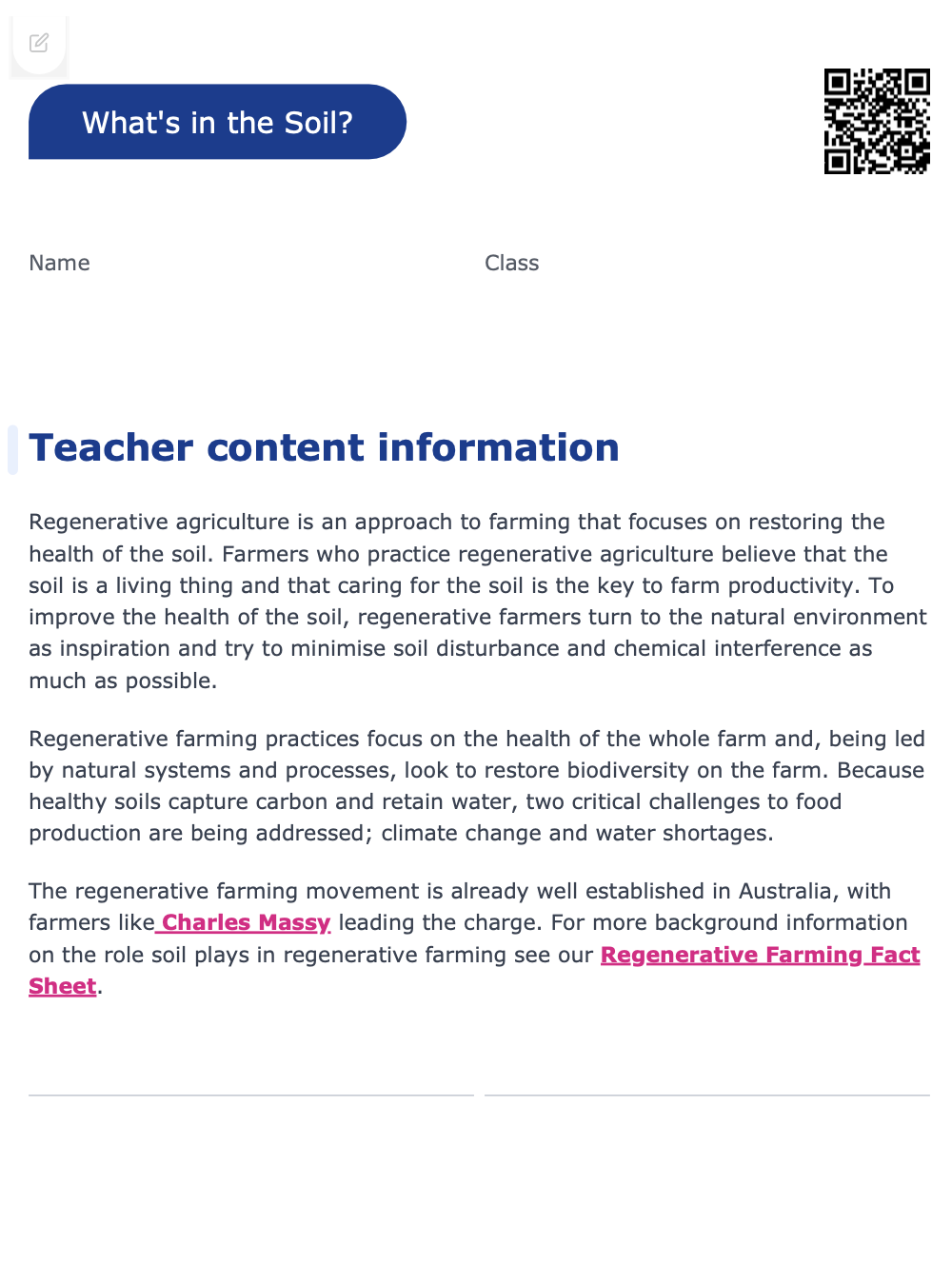Lesson summary
Students are introduced to their roles as soil scientists (they will retain these roles throughout this unit). They explore the composition of the soil and consider whether the soil is a living or non-living thing before observing soil in the schoolyard and under a microscope.
Learning intentions:
Students will...
- explore the composition of soil
- recognise that soil contains many living and non-living things.
Success criteria:
Students can...
- reflect on the importance of soil to life on earth
- describe living things found in the soil.
Lesson guides and printables
Curriculum links
Select your curriculum from the options below.
Lesson details
Skills
This lesson is designed to build students’ competencies in the following skills:
- curiosity
- communication
- reflection
Curriculum Mapping
Content descriptions:
Australian Curriculum (v9.0) content descriptions - Year 4 Science
Students learn to:
- explain the roles and interactions of consumers, producers and decomposers within a habitat and how food chains represent feeding relationships (AC9S4U01)
- write and create texts to communicate findings and ideas for identified purposes and audiences, using scientific vocabulary and digital tools as appropriate (AC9S4I06)
General capabilities: Critical and creative thinking.
Cross-curriculum priority: Sustainability.
Relevant parts of Year 4 Science achievement standards:
Students identify the roles of organisms in a habitat and construct food chains. They communicate ideas and findings for an identified audience and purpose, including using scientific vocabulary when appropriate.
UN Sustainable Development Goals
Target 2.4: By 2030, ensure sustainable food production systems and implement resilient agricultural practices that increase productivity and production, that help maintain ecosystems, that strengthen capacity for adaptation to climate change, extreme weather, drought, flooding and other disasters and that progressively improve land and soil quality.
Target 15.3: By 2030, combat desertification, restore degraded land and soil, including land affected by desertification, drought and floods, and strive to achieve a land degradation-neutral world.
Resources Required
- a selection of different types of soil, including samples from the school yard, a neighbour’s garden, and potting mix. Note: potting mix would be a useful soil type to collect. However, when using a dry potting mix, please follow any safety precautions outlined on the bag the potting mix came in, for example by wearing a mask and washing hands thoroughly after handling (see more here)
- device capable of sharing images with the class
- drawing materials
- magnifying glasses
- Scientific Drawing Guidelines - optional
- The Living Test - optional.
Additional Info
Level of teacher scaffolding: High - lead students in a walk around the schoolyard to observe soil, oversee class discussions and soil analysis tasks.
Special thanks to:

This lesson has been developed with the support of the Macdoch Foundation.
Cool's curriculum team continually reviews and refines our resources to be in line with changes to the Australian Curriculum.



Welcome back!
Don't have an account yet?
Log in with:
Create your free Cool.org account.
Many of our resources are free, with an option to upgrade to Cool+ for premium content.
Already have an account?
Sign up with:
By signing up you accept Cool.org's Terms and Conditions(Opens in new tab) and Privacy Policy(Opens in new tab).